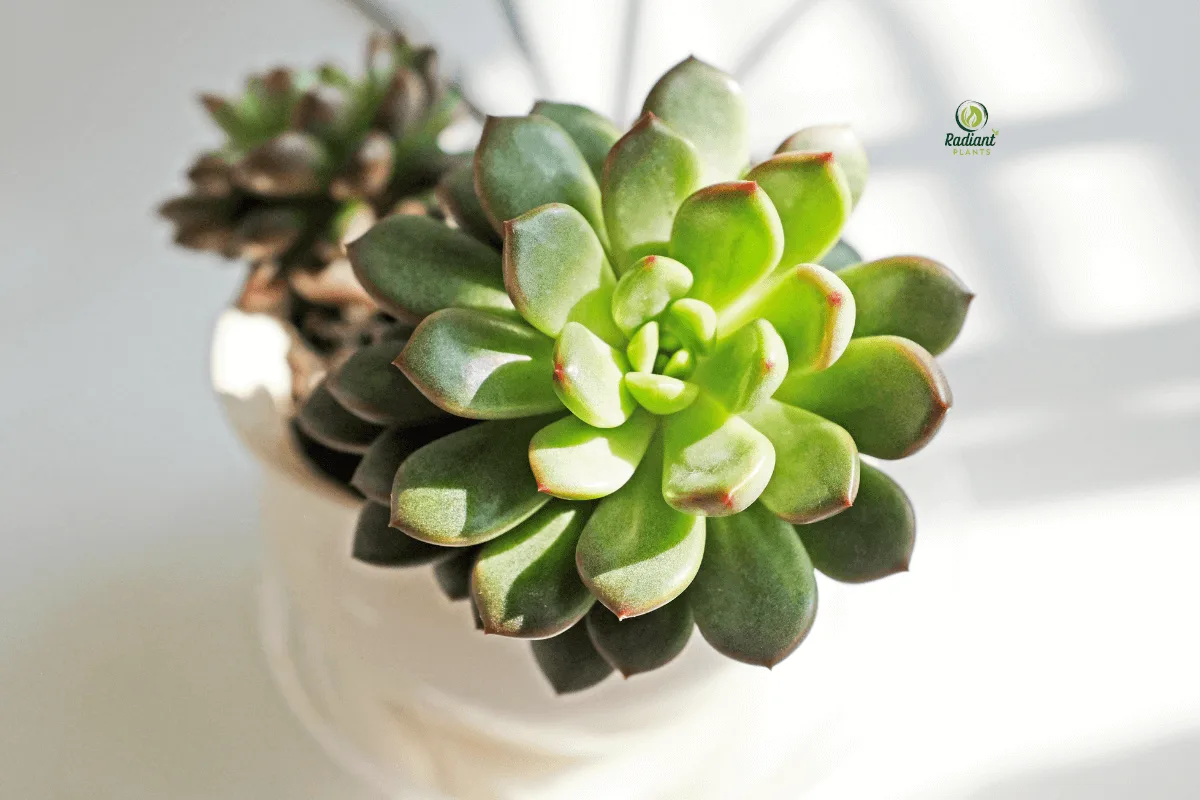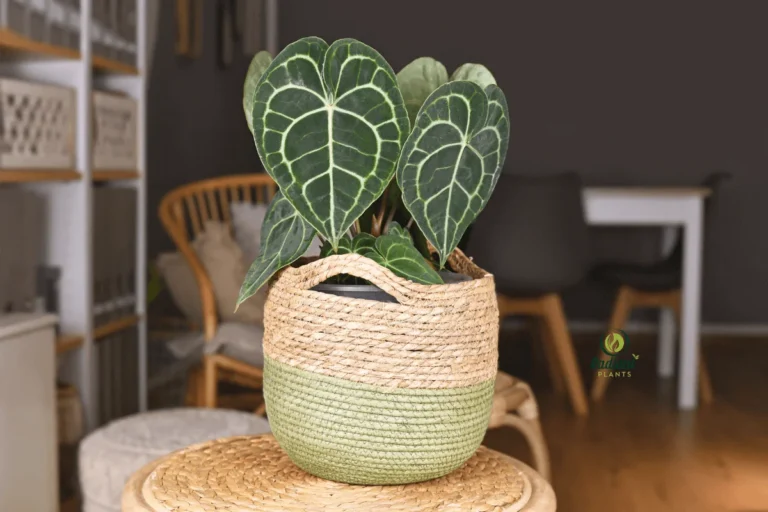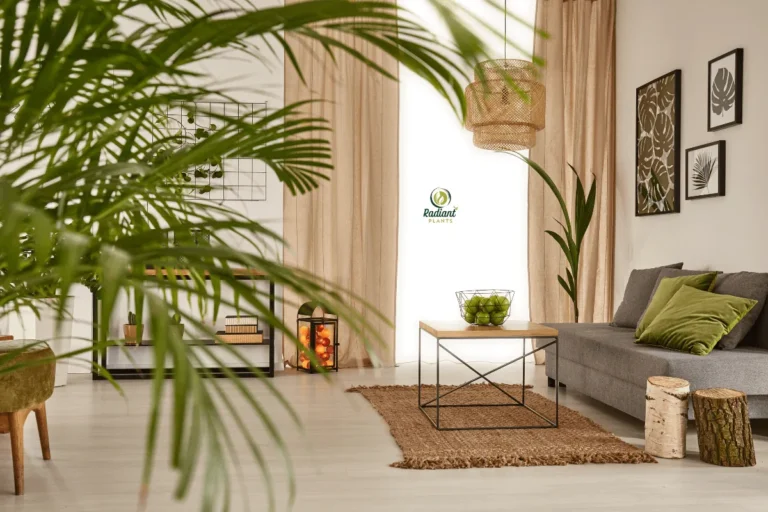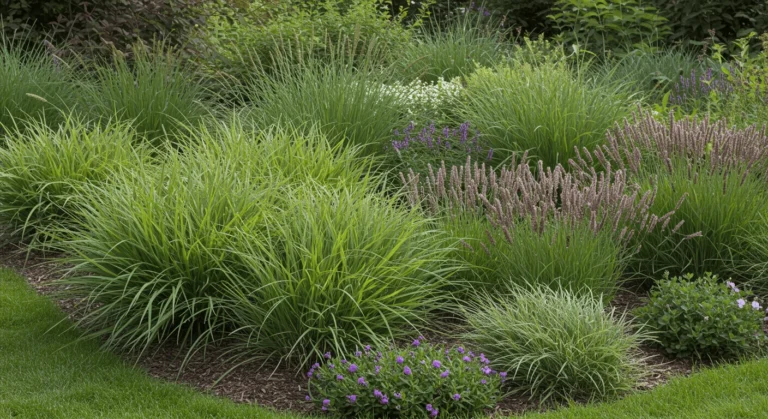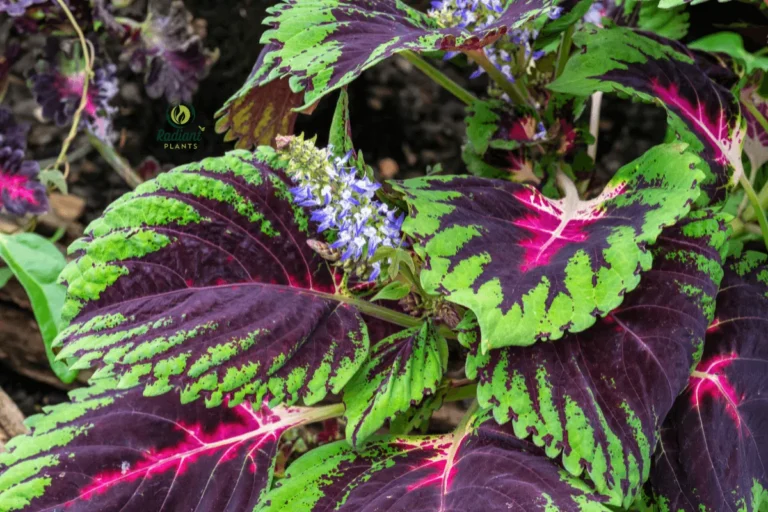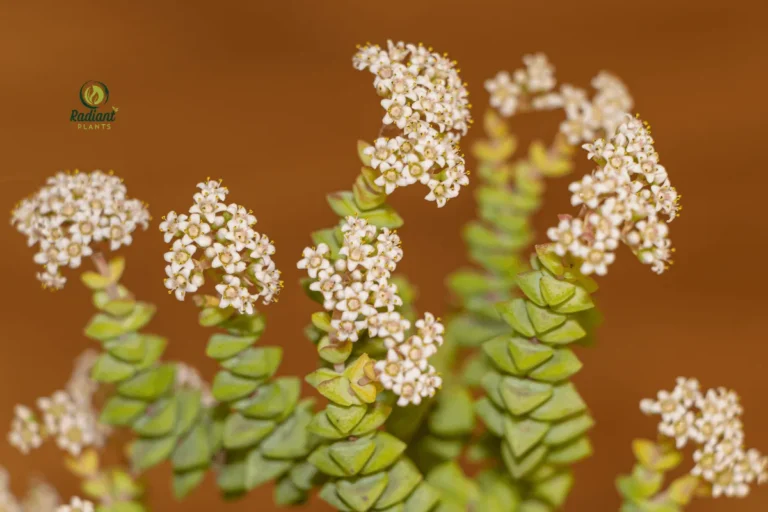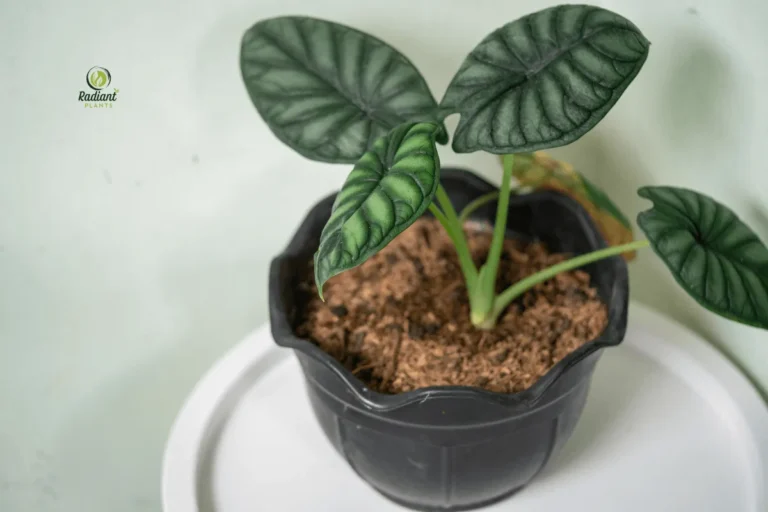Echeveria: 12 Beautiful Ways to Display These Desert Plants
My journey with Echeverias began three years ago when a friend gifted me a tiny Echeveria elegans. What started as a single windowsill resident quickly blossomed into an obsession. Today, my collection spans over 30 varieties, and I’ve experimented with countless ways to showcase these living gems. Through genuine trial and error, I’ve discovered displays that highlight their innate beauty and support their health and longevity.
These rosette-shaped succulents have captured the hearts of plant enthusiasts worldwide, transforming ordinary spaces into extraordinary showcases with their sculptural beauty and low-maintenance charm. Whether you’re a seasoned collector with dozens of specimens or just beginning your succulent journey with your first Echeveria, how you choose to display these plants can dramatically enhance both your home décor and the health of these remarkable desert plants.
Table of Contents
Table of Contents
Understanding Echeveria: Nature’s Living Sculptures
Before diving into display methods, take a moment to appreciate what makes these desert treasures so special. Understanding their unique characteristics will help you create displays that showcase their beauty while meeting their biological needs.




What Makes Echeveria Special Among Desert Plants
Echeverias stand out among succulents for several compelling reasons:
- Distinctive rosette formation creates naturally perfect geometric patterns that appeal to our innate love of symmetry
- Stunning color variations ranging from soft blue-green to vibrant pink-tipped leaves to deep purple hues that change with the seasons
- Remarkable drought-tolerance evolved over centuries in arid regions, making them forgiving of occasional neglect
- Versatile aesthetic appeal complements modern, minimalist, and bohemian décor styles equally well
The architectural quality of Echeverias makes them natural focal points in any space. Their slow growth patterns mean your displays remain relatively stable, requiring only occasional adjustments rather than constant maintenance.
Popular Echeveria Varieties for Display
While hundreds of Echeveria varieties exist, certain specimens consistently stand out for their display potential:
- Echeveria elegans (Mexican Snowball) – Compact pale blue-green rosettes with a powdery coating
- Echeveria peacockii (Peacock Echeveria) – Striking powdery blue leaves arranged in perfect symmetry
- Echeveria agavoides (Lipstick Echeveria) – Green pointed leaves with vivid red tips when sun-stressed
- Echeveria ‘Black Prince’ – Deep purple-black leaves create a dramatic contrast in arrangements
- Echeveria ‘Perle von Nürnberg’ – Dusty lavender-pink rosettes that become more vibrant with proper light
Each variety brings unique characteristics to your displays, from subtle color variations to distinctive leaf shapes. Consider mixing varieties for visual interest or creating themed collections based on color family or growth habit.
Table: Echeveria Varieties and Their Display Characteristics
Variety | Color Profile | Size | Best Display Method |
|---|---|---|---|
E. elegans | Pale blue-green | Small to medium | Terrariums, dish gardens |
E. peacockii | Powdery blue | Medium | Ceramic pots, rock gardens |
E. agavoides | Green with red tips | Medium to large | Statement pots, shelf arrangements |
E. ‘Black Prince’ | Deep purple-black | Medium | Contrasting white containers |
E. ‘Perle von Nürnberg’ | Pink-purple | Medium | Glass containers, hanging displays |
Essential Considerations Before Creating Your Display
The most visually stunning Echeveria displays a balance of aesthetic appeal with the plant’s fundamental needs. Before arranging your collection, consider these crucial factors that will determine both the appearance and longevity of your displays.
Light Requirements for Thriving Echeverias
Light exposure represents perhaps the single most critical factor in successful Echeveria displays. These desert natives crave brightness:
- Position displays near south or east-facing windows whenever possible for optimal light exposure
- Develop a habit of rotating plants quarterly, every 1-2 weeks, to promote symmetrical growth patterns
- Consider supplemental grow lights for displays in darker spaces, especially during winter months
- Watch for signs of inadequate light (stretching, fading colors) and reposition as needed
Remember that the perfect display location balances your home’s aesthetic needs with your plants’ light requirements. Even the most beautiful arrangement will fail if positioned where Echeverias cannot receive sufficient light.
Container Selection and Drainage Needs
Container choice significantly impacts both plant health and visual appeal:
- Always prioritize pots with adequate drainage holes to prevent root rot—the primary killer of Echeverias
- Consider container materials carefully: unglazed terracotta wicks away excess moisture, while ceramic and glass retain more moisture
- Select containers that allow growth room without being excessively large (which can lead to overwatering issues)
- Choose vessels that complement your home décor while highlighting the natural beauty of your plants
The perfect container enhances rather than competes with your Echeverias. Simple, clean-lined pots often showcase these geometric plants most effectively, allowing their natural forms to remain the focal point.
12 Beautiful Ways to Display Your Echeveria Collection
Now for the truly exciting part—discovering the myriad ways to showcase your Echeveria collection. Each method offers unique advantages, and you’ll likely find yourself mixing approaches throughout your home.
1. Minimalist Ceramic Pot Arrangements
Sometimes simplicity creates the strongest statement. Single Echeverias in well-chosen ceramic pots create sophisticated displays that highlight the plants’ natural geometry:
- Select pot colors that complement rather than match your Echeveria’s coloration—white and concrete tones create striking backdrops
- Experiment with pot textures from smooth matte finishes to subtle patterns that add visual interest
- Consider grouping three pots of varying heights but similar style for a coordinated vignette
- Choose statement varieties like Echeveria ‘Black Prince’ or ‘Perle von Nürnberg’ for standalone pot displays
Professional plant stylists often recommend leaving at least half the pot visible around the plant rather than selecting vessels that barely contain the rosette. This creates breathing room that emphasizes the plant’s natural form.
2. Multi-Level Shelf Styling with Echeverias
Echeverias shine when displayed at varying heights, creating natural focal points throughout a room:
- Arrange plants to create visual flow through height variation—place larger specimens at different levels
- Incorporate complementary succulents like trailing Sedum or spiky Haworthia for textural contrast
- Pay careful attention to light exposure across different shelf heights—lower shelves often receive significantly less light
- Consider ladder shelves or wall-mounted options that maximize vertical space while minimizing footprint
Open shelving units like the IKEA Vittsjö or West Elm’s Industrial Modular Shelving provide ideal frameworks for Echeveria displays, offering ample light penetration while creating organization for growing collections.
3. Hanging Displays for Space-Saving Beauty
When floor and surface space becomes limited, look upward to continue expanding your collection:
- Explore macramé hangers in natural fibers for a bohemian aesthetic that complements Echeveria’s organic forms
- Try glass orbs suspended from nearly invisible wire for floating displays in modern interiors
- Select compact, rosette-forming varieties like Echeveria ‘Lola’ or E. elegans that maintain tight growth patterns when suspended
- Consider weight distribution and stability in hanging arrangements—saturated soil can become surprisingly heavy
Remember to position hanging displays where they can be easily reached for maintenance. The most stunning suspended arrangement quickly becomes problematic if watering requires acrobatics.
4. Terrarium Wonderlands
Few display methods showcase Echeverias more dramatically than well-designed terrariums, creating miniature desert landscapes:
- Choose between closed systems (which create humidity, generally less ideal for Echeverias) and open vessels that allow airflow
- Create proper drainage layers using activated charcoal, pebbles, and specialized succulent soil mixes
- Select complementary companions like Crassula, small Aloe varieties, or decorative stones
- Develop maintenance routines specific to enclosed environments—terrariums typically require less frequent but more precise watering
Clear glass terrariums allow light to reach your plants from multiple angles while creating natural magnification that highlights the intricate details of Echeveria rosettes. They also protect plants from curious pets or children.
5. Living Wall Installations
For truly spectacular impact, consider displaying Echeverias vertically as living art:
- Explore DIY frame methods using picture frames fitted with hardware cloth and cactus soil
- Address irrigation challenges through removable planters or built-in drip systems
- Select compact, slow-growing varieties that won’t quickly outgrow their vertical spaces
- Start small with a test installation before committing to larger wall displays
One collector transformed an unused kitchen wall into a stunning Echeveria gallery using a custom frame with individual terracotta pockets. The installation has thrived for three years while becoming the home’s signature conversation piece.
6. Repurposed Vintage Containers
Adding personality and sustainability to displays through creative container repurposing:
- Transform antique finds like teacups, toolboxes, or vintage tins into unique plant homes
- Create drainage solutions for non-traditional containers using diamond drill bits or decorative stone layers
- Scout thrift stores and estate sales for one-of-a-kind vessels with character and history
- Tailor container choices to complement your existing aesthetic—industrial for modern spaces, floral patterns for cottage styles
The contrast between ancient desert plants and vessels with their histories creates compelling visual stories throughout your home. Just ensure any antique containers are properly sealed if they once contained potentially harmful substances.
7. Dish Gardens and Shallow Arrangements
Miniature desert landscapes showcase Echeverias in their natural-looking settings:
- Create miniature topographies using varying soil heights, decorative sand, and small rock formations
- Combine multiple Echeveria varieties with compatible succulents of contrasting textures
- Incorporate decorative elements like polished stones, driftwood, or small figurines for whimsical touches
- Master shallow container irrigation techniques, which require more frequent but less voluminous watering
Shallow arrangements allow you to create expansive displays that mimic natural Echeveria habitats while taking up minimal vertical space—perfect for sideboards, dining tables, or low windowsills.
8. Coffee Table Centerpieces
Transform everyday gathering spaces with Echeveria displays that spark conversation:
- Design seasonally rotating arrangements as living centerpieces that evolve throughout the year
- Balance size and proportions appropriate to your table dimensions—avoid obstructing sightlines during gatherings
- Use protective coasters or saucers to prevent moisture damage to wooden surfaces
- Create thematic arrangements that complement seasonal décor or upcoming celebrations
Coffee table displays place your collection at eye level while seated, allowing friends and family to appreciate the intricate details of Echeveria rosettes that might go unnoticed in higher positions.
9. Bathroom Oasis Displays
Contrary to conventional wisdom, select Echeverias can thrive in bathroom environments:
- Consider humidity levels carefully—most Echeverias prefer drier environments, but can adapt to moderate humidity
- Utilize natural light from bathroom windows, which often provide filtered brightness ideal for these plants
- Explore space-saving solutions like narrow window sill arrangements or small accent groupings
- Select varieties with enhanced tolerance for humidity, like Echeveria subrigida or E. gigantea
Interior designer Melanie Turner recommends bathroom Echeveria arrangements as “living accessories” that add color and life to typically sterile spaces while benefiting from the room’s abundant natural light.
10. Windowsill Gradient Arrangements
Create stunning visual progressions showcasing the diverse coloration within the Echeveria family:
- Arrange specimens to create color gradients from palest blue-green through pinks to deep purples
- Develop light management techniques using sheer curtains or adjustable blinds to prevent sunburn
- Monitor temperature fluctuations near windows, especially in extreme seasons
- Implement seasonal adjustments, moving plants slightly inward during winter or further back during intense summer sun
Windowsill arrangements allow you to showcase your collection while providing optimal light exposure. Consider removable glass shelves to create multi-level displays within deep window frames.
11. Office Desk Companions
Bring natural beauty to work environments with compact Echeveria displays:
- Select appropriately sized containers that won’t overwhelm limited desk space
- Choose low-maintenance varieties that can tolerate occasional neglect during busy periods
- Address office lighting challenges through the strategic placement of desk lamps with full-spectrum bulbs
- Enjoy the psychological benefits of plant presence in work environments
Research from the University of Exeter demonstrated that productivity increases up to 15% when workspaces include living plants. Even a single Echeveria in an appealing container can transform your workspace while providing visual breaks during intense concentration.
12. Seasonal Holiday Arrangements
Incorporate Echeverias into celebratory décor for sustainable holiday displays:
- Use Echeverias as living alternatives to cut arrangements for table centerpieces
- Add temporary decorative elements like small polished stones in seasonal colors or miniature ornaments
- Create gift-worthy arrangements in decorative containers for plant-loving friends and family
- Develop post-holiday transition plans to move plants back to optimal growing conditions
Holiday arrangements showcase your collection in new contexts while providing sustainable alternatives to disposable decorations. Just ensure any added decorative elements don’t damage the plants’ protective coating or block crucial light.
Table: Display Methods Matched to Home Décor Styles
Display Method | Best For Décor Style | Maintenance Level | Light Requirements |
|---|---|---|---|
Ceramic Pots | Modern, Minimalist | Low | High |
Shelf Styling | Eclectic, Boho | Medium | Medium-High |
Hanging Displays | Bohemian, Coastal | Medium | Medium |
Terrariums | Modern, Victorian | Medium-High | Medium |
Living Walls | Industrial, Modern | High | Medium-High |
Vintage Containers | Farmhouse, Eclectic | Medium | Varies |
Dish Gardens | Southwestern, Minimalist | Low | High |
Coffee Table Displays | All Styles | Low | Medium |
Bathroom Displays | Spa, Modern | Medium | Low-Medium |
Windowsill Arrangements | All Styles | Medium | High |
Office Displays | Modern, Minimalist | Low | Low-Medium |
Holiday Arrangements | Seasonal | Medium | Varies |
Common Display Challenges and Solutions
Even experienced collectors encounter challenges when displaying Echeverias. Anticipating and addressing these common issues will help your arrangements thrive for years.
Preventing Etiolation in Indoor Displays
Etiolation—the stretching of plants seeking light—presents the most common challenge for indoor Echeveria displays:
- Learn to recognize early warning signs, including lengthening between leaves and flattening rosettes
- Implement regular rotation technique,s turning plants a quarter-turn weekly
- Explore supplemental lighting options ranging from inexpensive clip-on grow lights to sophisticated full-spectrum systems
- Make seasonal adjustment,s accounting for changing sun angles and intensity throughout the year
Remember that prevention far outweighs correction when dealing with etiology. Once an Echeveria stretches, that growth pattern cannot be reversed, though proper beheading and propagation can create new compact rosettes.
Balancing Aesthetics with Plant Health
Sometimes, the most visually striking locations aren’t ideal for plant health:
- Develop clear priorities about when health trumps appearance—healthy plants ultimately create more beautiful displays
- Design displays that incorporate proper growing conditions without sacrificing style
- Recognize warning signs of unsuitable locations, including color changes, growth patterns, or pest issues
- Consider temporary display solutions where plants rotate between ideal growing locations and showcase positions
Plant stylist Hilton Carter advises, “The most stunning plant displays begin with healthy specimens. Rather than forcing plants into challenging environments, select species suited to your existing conditions and design around their needs.”
Managing Pests in Decorative Arrangements
Even the most beautiful display can be compromised by unwelcome visitors:
- Implement preventative measures, including proper spacing, airflow, and regular inspection
- Develop treatment protocols using insecticidal soap, neem oil, or isopropyl alcohol that won’t damage decorative containers
- Establish quarantine procedure, keeping new acquisitions separated from established collections
- Consider natural deterrents like diatomaceous earth that can be incorporated into decorative arrangements
A simple homemade remedy combining one part 70% isopropyl alcohol with four parts water in a spray bottle provides an effective treatment for mealybugs—the most common Echeveria pest—without damaging most containers or surfaces.
Seasonal Display Rotation Calendar
Successful long-term displays require adjustments throughout the year:
- Spring (March-May): Gradually increase light exposure; move plants closer to windows; begin fertilization schedule
- Summer (June-August): Protect from intense afternoon sun; increase airflow; watch for pest activity in warm conditions
- Fall (September-November): Reduce fertilization; begin moving plants inward from windows as light intensity decreases
- Winter (December-February): Maximize available light; reduce watering frequency; protect from cold drafts
This seasonal approach ensures your Echeveria displays remain both beautiful and healthy throughout the year, adapting to changing environmental conditions before problems develop.
DIY Display Projects for Echeveria Enthusiasts
Ready to take your displays beyond basic arrangements? These DIY projects create custom showcases perfectly suited to your unique collection.
Creating a Succulent Picture Frame
Living wall art creates unforgettable focal points in any space:
Materials:
- Shadow box frame (8″ depth minimum)
- Hardware cloth or chicken wire
- Cactus soil mix
- Sphagnum moss
- Small Echeveria varieties
- Staple gun and wood screws
Step-by-Step Process:
- Remove the glass and backing from the shadow box
- Line with plastic sheeting for moisture protection
- Attach hardware cloth using staples approximately 1″ from the front edge
- Fill the frame with dampened cactus soil
- Insert Echeveria cuttings through the wire grid
- Allow 2-3 weeks for rooting before hanging
Maintenance Tips:
- Water by removed from the wall and soaked horizontally
- Select varieties under 4″ diameter at maturity
- Replace specimens as needed to maintain the design
Timeframe: Weekend project (3-4 hours active work plus rooting period) Budget: $50-75, depending on frame choice and plant selection
Building a Custom Echeveria Display Shelf
Create the perfect showcase tailored precisely to your collection’s needs:
Design Considerations:
- Incorporate light reflective surfaces to maximize natural brightness
- Include adjustable shelving to accommodate growing specimens
- Consider built-in grow light strips for lower shelves
- Design drainage solutions to prevent water damage
Multi-functionality Options:
- Incorporate propagation stations for cuttings
- Add lower enclosed cabinets for supply storage
- Design modular sections that can expand with your collection
Standard lumber from home improvement stores combined with basic woodworking tools can create custom shelving uniquely suited to your space and collection. Consider repurposed materials for industrial or rustic aesthetics that complement Echeveria’s natural beauty.
Crafting Perfect Plant Labels for Displays
Maintain a collection organization without compromising aesthetics:
- Create copper plant markers that develop natural patina, complementing terracotta containers
- Explore river stone labels with permanent marker or paint pen identifications
- Design printable templates for consistent collection documentation
- Develop photography-based catalog systems, maintaining records while keeping displays minimalist
Clear identification becomes increasingly important as your collection grows. Consider decorative options that enhance rather than detract from your displays while providing necessary information for proper care.
Styling Tips from Professional Plant Designers
Elevate your Echeveria displays from attractive to extraordinary with insights from design professionals who specialize in botanical styling.
Creating Visual Impact with Echeveria Groupings
Professional displays leverage fundamental design principles:
- Implement the rule of odd numbers grouping three, five, or seven plants for natural-looking arrangements
- Apply basic color theory, placing complementary colors together for maximum impact
- Create texture contrast,s pairing smooth-leaved Echeverias with rougher companions like Haworthia
- Establish visual harmony through repeated elements while avoiding strict symmetry
“Plant styling follows many principles of traditional interior design,” notes botanical stylist Amanda Robinson. “The difference lies in working with living elements that evolve and change over time, adding an element of organic unpredictability that makes these displays uniquely compelling.”
Photographing Your Echeveria Displays
Document your collection’s beauty with photography techniques that capture true colors and forms:
- Utilize natural window light during morning hours for soft, diffused illumination
- Position a white foam board opposite your light source to fill shadows and reduce contrast
- Experiment with macro settings to capture the intricate details of rosette formations
- Create seasonal documentation showing how your collection and displays evolve throughout the year
For smartphone photography, position plants near bright, indirect light, clean your lens thoroughly, and use portrait mode for that professional depth-of-field effect that makes Echeverias pop against blurred backgrounds.
Conclusion: Finding Your Personal Echeveria Display Style
Creating beautiful displays for your Echeveria collection balances artistic expression with horticultural understanding. These fascinating desert plants offer nearly unlimited possibilities for creative presentation while remaining remarkably adaptable to various environments.
Your display style will likely evolve alongside your collection, beginning perhaps with simple windowsill arrangements before expanding into more elaborate installations. Embrace this evolution as part of the journey, experimenting with different containers, groupings, and locations to discover which approaches resonate most deeply with your aesthetic sensibilities while supporting your plants’ health needs.
Remember that the true joy of collecting Echeverias lies not merely in possession but in the relationship you develop with these living sculptures—observing their subtle seasonal changes, celebrating new growth, and continually refining how you showcase their extraordinary beauty. Your displays become expressions of personal style while creating living environments that bring the stark elegance of desert landscapes into everyday spaces.
BEST TIPS | HOW TO GROW AND CARE FOR ECHEVERIA PLANT
FAQ About Displaying Echeveria Plants
How often should I rotate my Echeveria displays to ensure even growth?
Rotate your Echeveria displays a quarter turn every 1-2 weeks to promote even growth, especially for plants in window displays or on shelves where light comes primarily from one direction. Establish a regular rotation day (perhaps when watering) to develop consistency in this important maintenance practice.
Can Echeveria plants survive in bathroom environments?
Some Echeveria varieties can thrive in bathrooms with bright, natural light. However, ensure adequate ventilation as excessive humidity can lead to rot problems in these desert plants. Bathrooms with windows and good air circulation provide the best environment, while dark, steamy bathrooms should be avoided entirely.
What’s the best way to display Echeveria plants without drainage holes?
While not ideal, you can display Echeveria in containers without drainage by creating a drainage layer with activated charcoal and pebbles, and by being extremely careful with watering. Consider using this as a temporary display method only, perhaps rotating plants between decorative cache pots and proper drainage containers on a regular schedule.
How do I create an Echeveria display that’s safe for homes with pets?
While Echeveria plants are generally non-toxic, they can cause mild digestive upset if ingested. Create pet-safe displays by placing your Echeveria on high shelves, in hanging planters, or within terrarium enclosures. Wall-mounted displays offer particularly good solutions for homes with curious cats or destructive dogs.
What are the best companion plants to display alongside Echeveria?
Haworthia, Sedum, and Sempervivum make excellent companions for Echeveria displays as they have similar care requirements and complementary growth habits. For textural contrast, consider aloes, small agaves, or even flowering succulents like Kalanchoe that provide seasonal color while maintaining the desert aesthetic.
How can I display my Echeveria collection in a north-facing apartment?
For north-facing spaces with limited natural light, consider supplemental grow lights and choose Echeveria varieties that tolerate lower light conditions. Place displays as close to windows as possible and use reflective surfaces to maximize available light. Mirrored trays, white walls, and metallic accents all help bounce available light onto your plants.
Ready to transform your Echeveria collection into stunning displays? The journey from basic arrangements to show-stopping presentations begins with a single step.
Share your creative arrangements with our thriving community by tagging #EcheveriaDisplay on social media. Your unique perspective might inspire fellow enthusiasts while connecting you with like-minded collectors worldwide.
Need supplies for your next Echeveria project? Visit our recommended resources page for trusted suppliers of containers, specialized soils, and rare Echeveria varieties that will take your displays to the next level.
Join our monthly newsletter for seasonal display ideas and exclusive care tips delivered straight to your inbox. Each edition features collector spotlights, trending arrangements, and solutions to common display challenges—everything you need to continuously evolve your Echeveria presentation.
Your Echeveria collection deserves to be showcased in ways that highlight these remarkable plants’ natural beauty while creating living art throughout your home. Begin your display transformation today!

